On 17 October Didier Raas led a fungi foray in the Forest of Preuilly. We still hadn't had any significant rain by that date, so the pickings were lean. Still worth going on and some interesting finds nonetheless. And very good for reinforcing knowledge, and personal networking.
The fungi foragers set off.
Red-capped Scaber Stalk Leccinum aurantiacum (Fr. Bolet orangé des chenes), an abundant edible species used to bulk out the really prized ceps.
Verdigris Agaric Stropharia aeruginosa (Fr. Strophaire vert-de-gris), a very small specimen of a very beautiful mushroom, identifiable by its flaky edged cap, which would normally also be greasy, but it was too dry. A species of grassy track or woodland edges.
A polypore Lenzites sp, showing the slug munched upper.
The same mushroom, showing the underside.
Humpbacked Brittlegill Russula caerulea (Fr. Russule amère) syn R. amara, showing the yellow gills. The cap has a central boss which is diagnostic. The spores are also yellow, and the stipe does not react to chemical tests like the species below. This species only grows under conifers, and the ultimately 8-10 cm diameter wine coloured cap is conical when the mushroom is young. The mushroom has a really noticeable fruity smell, a bit like ripe figs, which is well worth remembering to check for.
Beechwood Sickener Russula nobilis group (Fr. Russule émétique compacte) syn R. mairei, showing a blue reaction to being painted with the chemical gaiac, which mycologists carry to test certain mushrooms. This species is an emetic, so not edible.
Iodine Bolete Boletus impolitus (Fr. Bolete dépoli) syn Hemileccinum impolitum. The blue in this case has appeared naturally as a reaction to being cut. This species smells faintly of walnuts. The cap is light and the stem yellow with no net. It is edible, but only mediocre eating.
Bolete Eater Hympomyces chrysosperma, a parasite attacking bolete mushrooms.
Macrolepiota fuliginosa (Fr. Lépiote fulgineuse), a parasol mushroom which is more common here than the better known M. procera. The diagnostic to separate the two species is that the mottled stem stains brown when scraped for M. fuliginosa and not for M. procera. It is edible, which tells you it has a cap diameter of more than 10 cm.
Earthstar Geastrum sp, rather rare. [Update: Didier Raas has identified this as Hygroscopic Earthstar Astraeus hygrometricus.]
Didier's top tips this time were:
- Never feed mushrooms to children under 8 years old.
- Don't eat Parasol mushrooms/Lepiotes that have caps under 10 cm in diameter.
- A non-exhaustive checklist to help you identify bolete species:
- Colour of tubes?
- Colour of pores?
- Does cap peel easily?
- Does cap overhang tubes?
- Do tubes separate easily from flesh?
- Scales or net on stem?
- Cap waxy or dry?

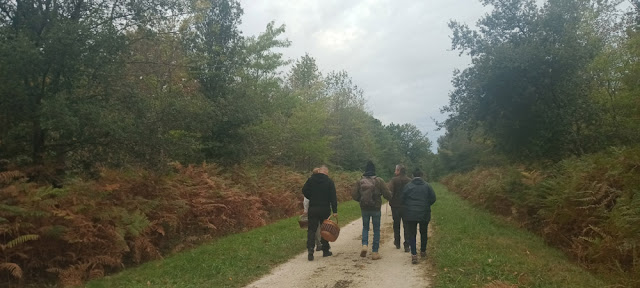
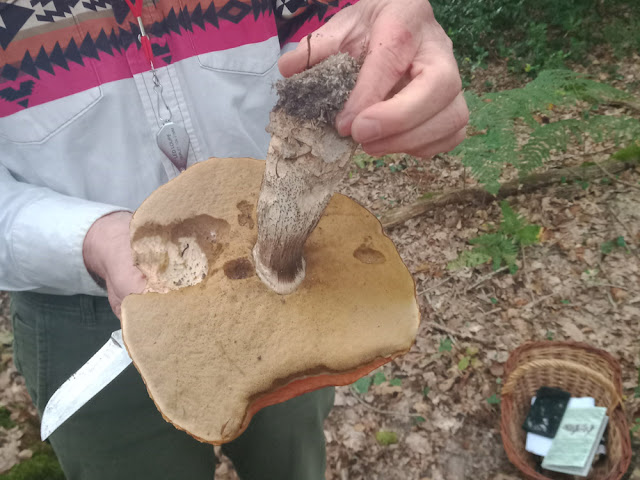


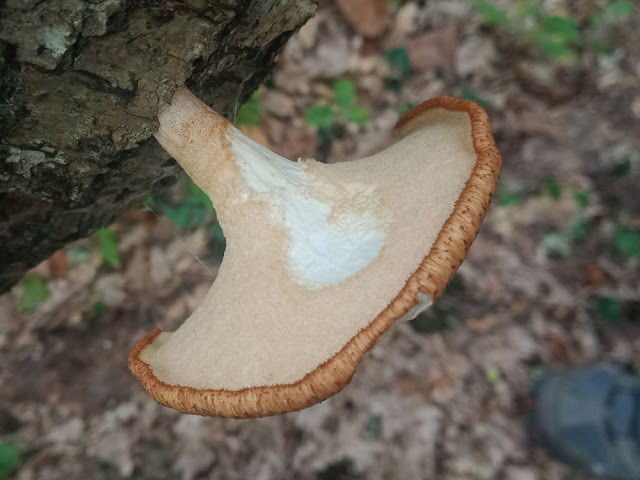
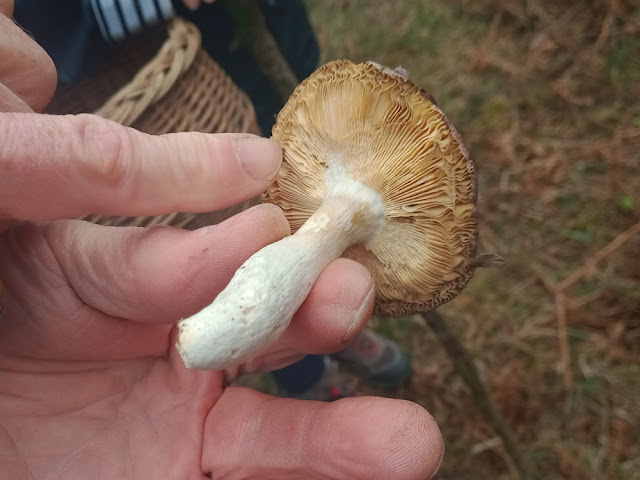
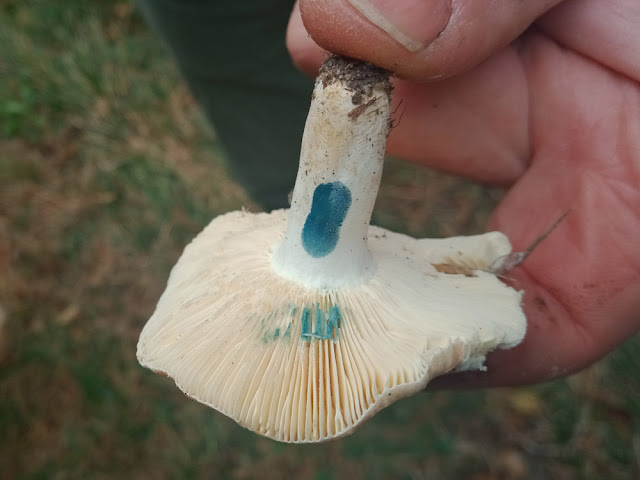
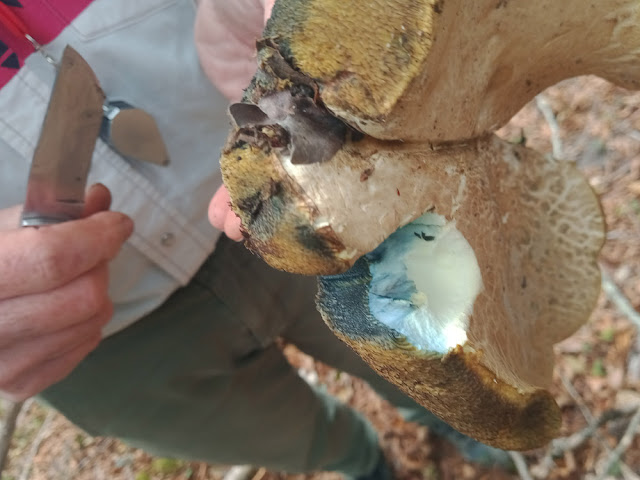
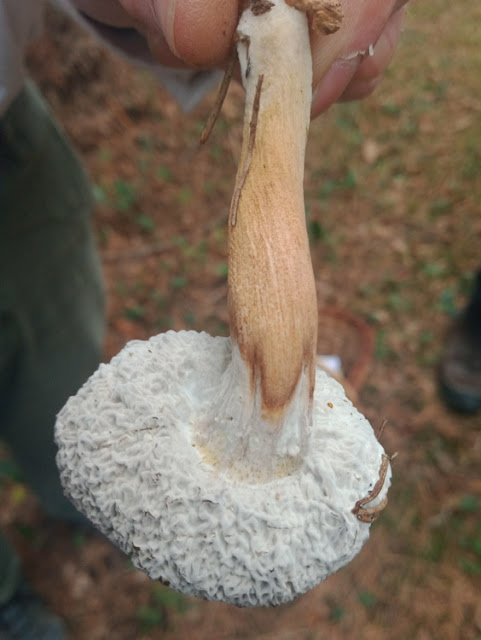

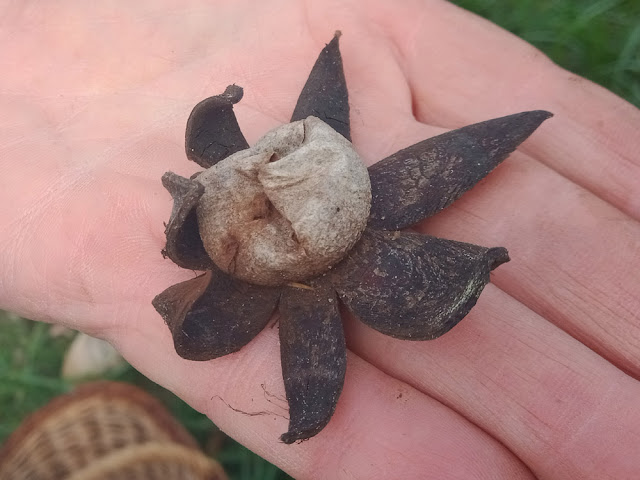
No comments:
Post a Comment